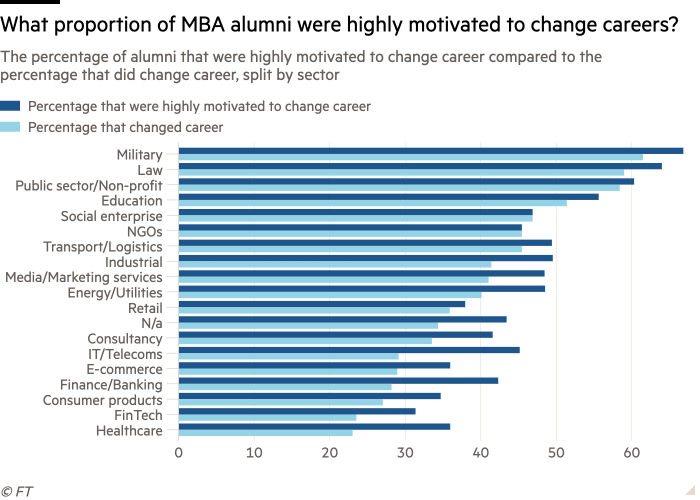Most MBA alumni go into a narrow range of careers
Better range in the workforce might make great company as properly as moral sense — but it remains confined in the classrooms of major company schools.
A Economic Occasions investigation of far more than a hundred,000 respondents from top rated company schools demonstrates that, in excess of the past ten years, most MBAs came from and returned right after graduation to a slim range of occupations, with almost 50 % using employment in finance, consulting and technology.
Even though some schools seek out to appeal to and prepare students for a broader range of work, from a sample of far more than 7,000 alumni who graduated in 2018 fewer than six for each cent came from government, charities and social enterprises. And, this year, just 2.7 for each cent were doing the job in people sectors.
Men and women recruited from these non-company companies — as properly as people from instruction, the navy and regulation — were also among the people who claimed they most needed to change occupations by using an MBA.

Employing the Herfindahl index, a measure of the dimension of companies in relation to their industries, the multi-campus Hult International Business School had the most varied students by work sector prior to starting an MBA in 2018, followed by the Marshall School University of Southern California and the Smith School of Business in Canada.
The Chinese University of Hong Kong Business School had the most varied work results three years right after graduating, followed by the Ross School at the University of Michigan and the Rotterdam School of Management.
The FT also collects data on gender equilibrium among the students, school and governance bodies of company schools, and observed it has enhanced in current years — as properly as the breadth of nationalities represented at the institutions.
A fuller range of range indicators would involve the social, economic, ethnic and spiritual backgrounds of candidates, as properly as people with bodily disabilities, neurodiversity and sexual orientation. However, versions between nations in beneath-represented teams and regulatory limitations on data collection make these types of measures difficult to acquire and compare.







